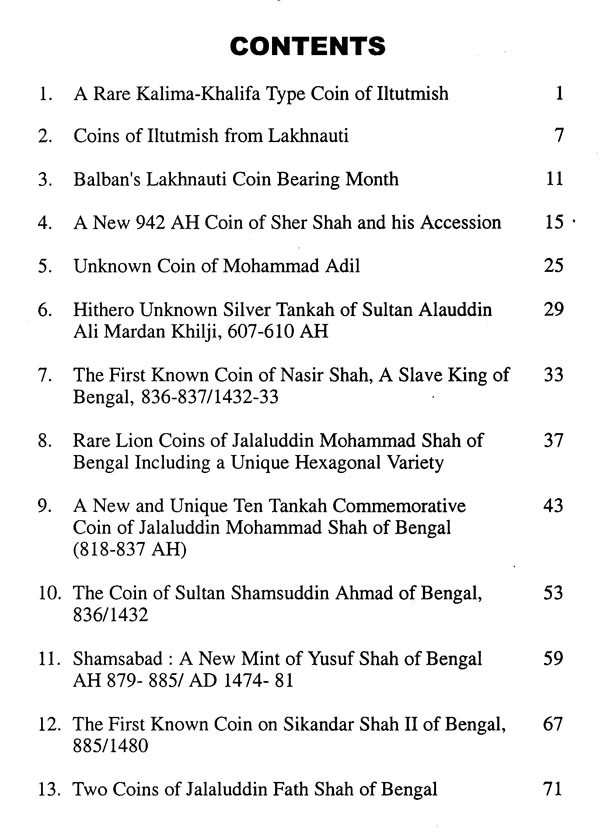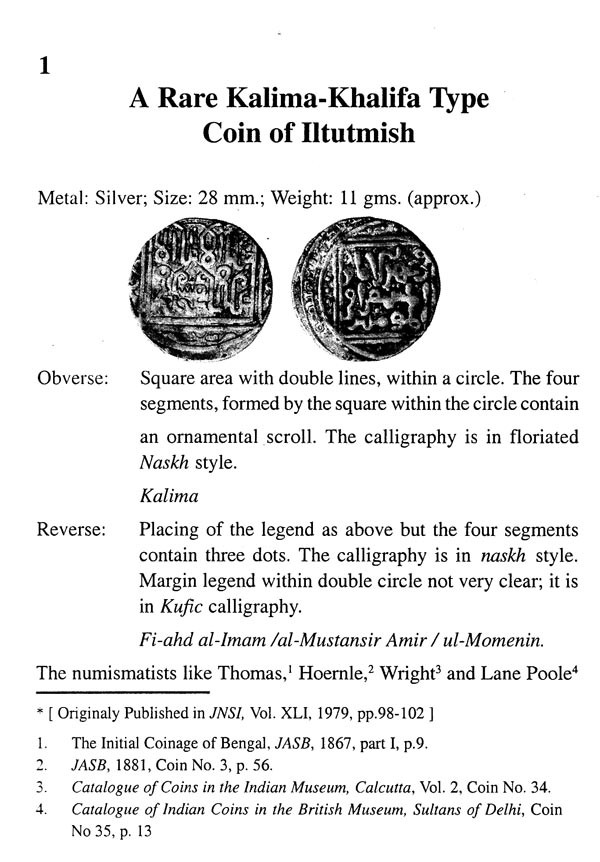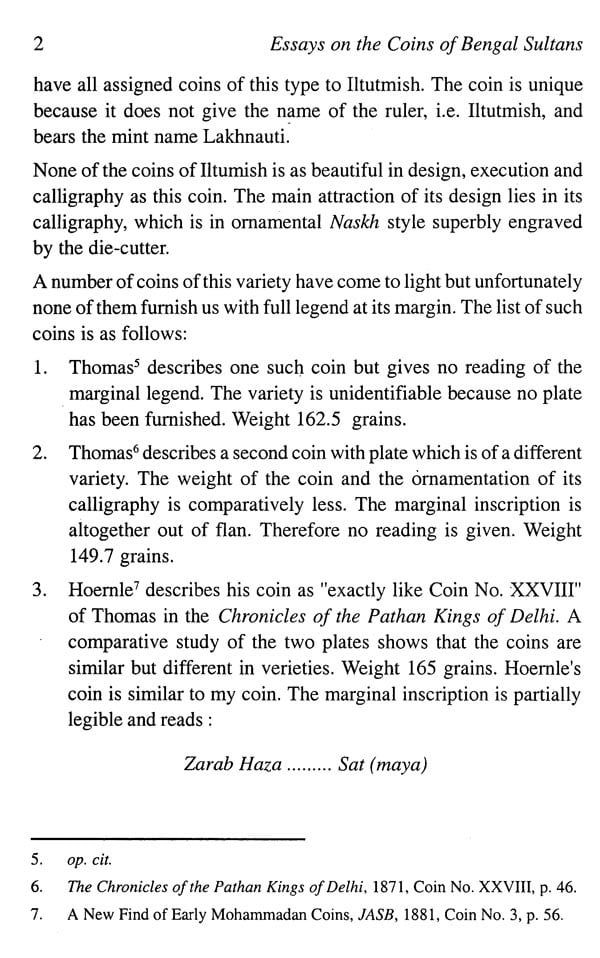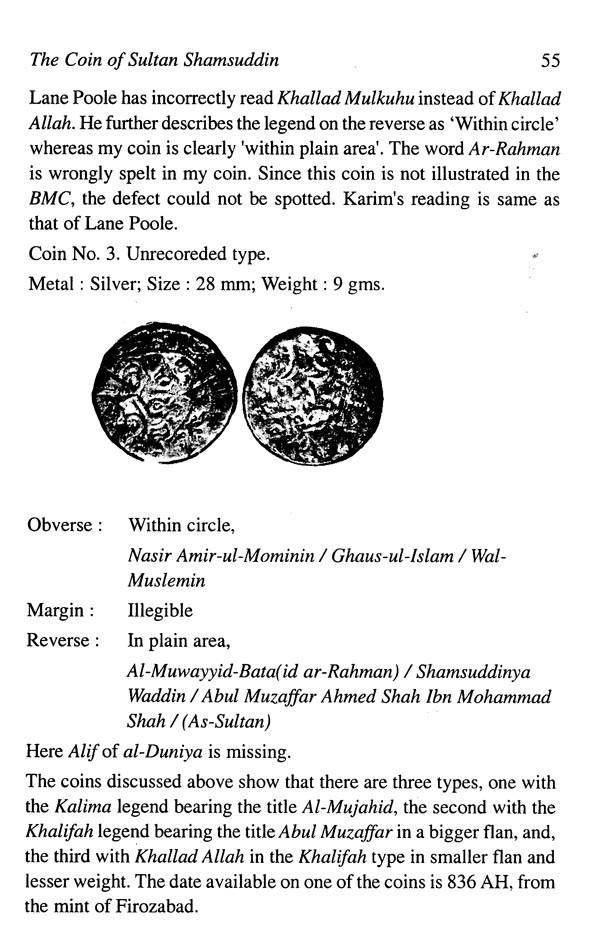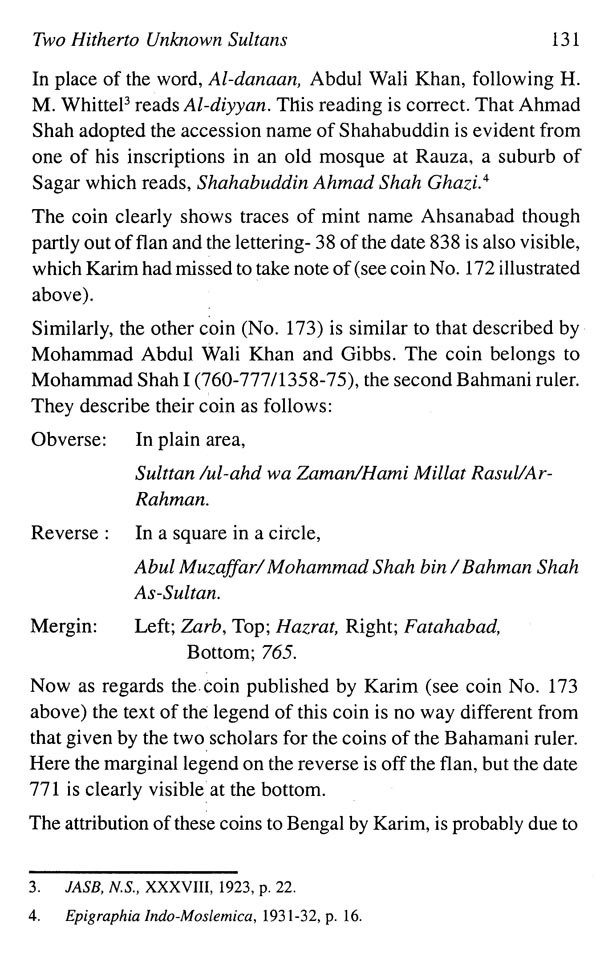
Essays on the Coins of Bengal Sultans
Book Specification
| Item Code: | UAC491 |
| Author: | G. S. Farid |
| Publisher: | IIRNS Publications Pvt. Ltd |
| Language: | English |
| ISBN: | 8186786139 |
| Pages: | 172 (Throughout B/W Illustrations) |
| Cover: | PAPERBACK |
| Other Details | 8.50 X 5.50 inch |
| Weight | 280 gm |
Book Description
Gholam Sharfuddin Farid was born on January 31, 1927, in Calcutta. He graduated in science from Aligarh Muslim University in 1950. He started as a coin collector but soon graduated to a numismatic scholar. He contributed many research articles on medieval Indian coins especially the coins of Bengal Sultans, that were published in different numismatic journals. The credit of publishing many new coins of Bengal Sultan for the first time goes to him. Apart from being a renowned numismatist, he is also a prolific philatelic journalist, a recognised research scholar and an able postal historian of India. He has contributed more than sixty articles on different subjects in philately journals in India and abroad. He has acted as a judge at the International Gandhi Stamp Exhibition and the Indian National Philatelic Exhibition. He has also been collecting Calcutta postcards for many years, most of which have been recently published, with extensive notes, in book form entitled Picture Postcards from Calcutta, 1885 -1980.
Mr. Farid is also interested in Islamic calligraphy on which he has published articles in various journals, including the Philatelic Journal of India. A compilation in Urdu, Maqalat Farid, has been recently published, which covers a wide variety of subjects. To sum up Mr. Farid's achievements in few words: a well known philatelist, numismatist and deltiologist of India.
There are many ways of reading historical records, the study of numismatics being one of them. Every society, in whatever phase of civilization, needs what we call today "legal tender" with which to transact business and trade, facets of human behaviour without which no organized human society can hope to exist. What this implies is that the study of numismatics can turn out to be an excellent source of getting to know certain aspects of selected societies, such as who was the prince or king and at what period, what was the state of metallurgy of a particular time, how technologically or aesthetically developed was a particular society, etc.
Given the diverse nature of Indian history, both in terms of its cultural content and geographical and temporal spread, it is clear than numismatics can help greatly in the study of the subcontinent's past. Not surprisingly, this has been just the case, the path being first shown by British orient lists and others in the 19th Century, the early pioneers working under the aegis of the Asiatic Society of Bengal.
This publication gets together the work of my father, G. S. Farid, the well-known numismatist who, like some other scholars, started collecting coins as a hobby and ended up contributing more than 33 research papers on the Medieval coins of India, specially the coins of the Sultans of Bengal. Some of his articles were published in the Journal of the Numismatics Society of India, the Asiatic Society Journal and the Numismatic Digest. Today, these papers have become standard reference works for historians and researchers delving into the subject. His book A Collector's Guide to the Study of Coins of the Sultans of Bengal has come to be treated as a handbook for beginners on how to read Muslim coins.
I am extremely thankful to Mr. Danish Moin of IIRNS for accepting the responsibility of compiling this volume and to IIRNS Publications for publishing it.
